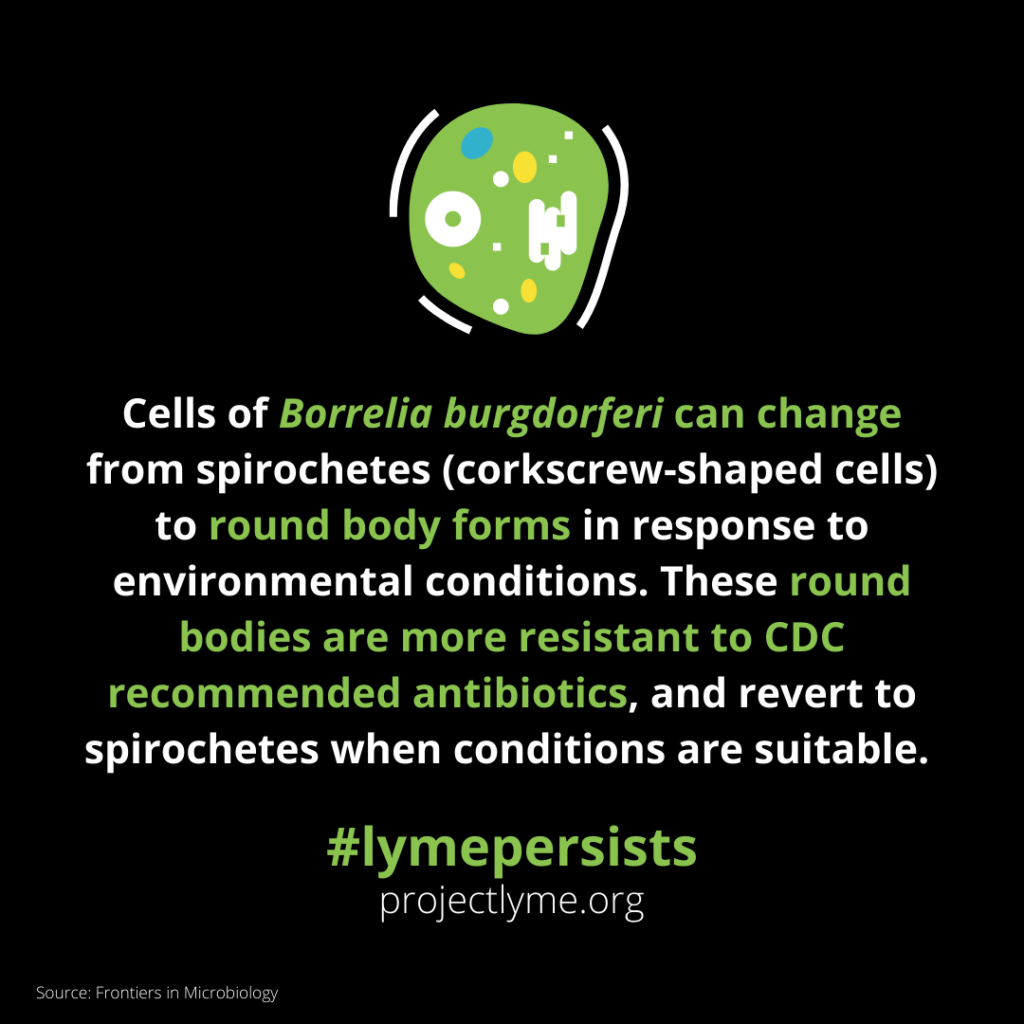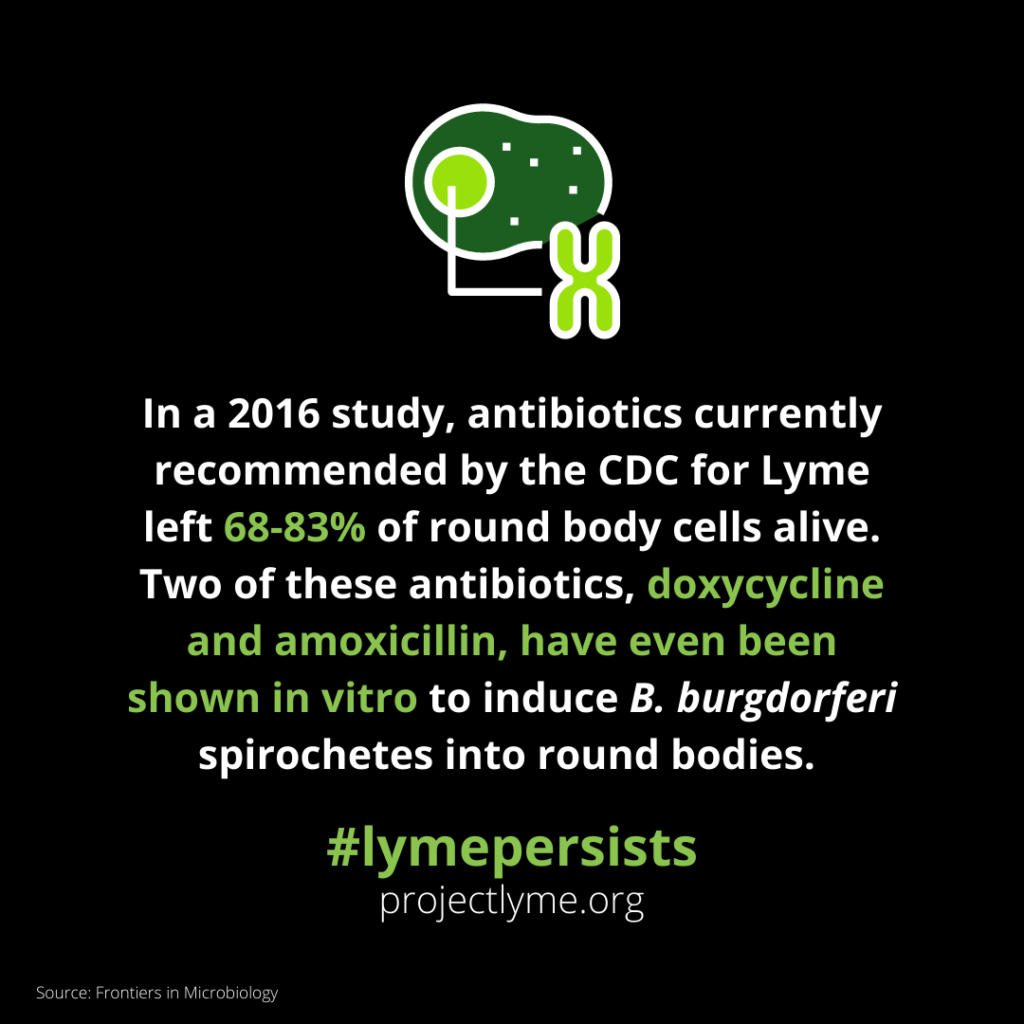SPIROCHETES CAN CHANGE INTO
ANTIBIOTIC RESISTANT ROUND BODIES



Borrelia burgdorferi, the bacteria that causes Lyme Disease, has long been known to change from the well known spirochete form (corkscrew shaped bacteria) into round body forms, which have been also referred to as cysts, cell wall deficient forms, L-forms, and spheroplasts.
Round bodies are spherical in shape and have both a lower metabolism and a greater resistance to antibiotics than spirochetes. Like biofilms, round bodies can be induced by unfavorable environmental conditions, including antibiotic exposure. They also can form early on in an infection or culture but become more common as the bacteria shifts to the stationary phase—when a bacterial population hits its peak—which occurs both in vitro and in a disseminated infection, and they have been found in biofilms as well.
Over the years, round bodies have been found in humans in multiple studies: in the brains of three Lyme patients, in the brains of Alzheimer’s patients, and in six of twelve Lyme patients who had been or were currently being treated with antibiotics.
A study from 1995 found that doxycycline and penicillin induce round body forms, and a 2016 study used amoxicillin—a CDC recommended antibiotic for treatment of Lyme—to induce round body forms in order to test their susceptibility to various drugs. After three days of induction with amoxicillin, 96% of B. burgdorferi spirochetes in a five day old culture became round bodies, and were able to revert back to spirochetes once conditions were suitable, as seen in other studies (Brorson and Brorson, 1997; Murgia and Cinco, 2004), indicating that they were viable cells.
Antibiotics currently recommended by the CDC did not fare well against the round bodies. When used on separate five day old cultures of round bodies and spirochetes, doxycycline left 83% viable (metabolically active) round bodies, compared to 56% viable spirochetes. Cefuroxime left 75% viable round bodies, compared to 34% viable spirochetes, and ceftriaxone left 68% viable round bodies, compared to 31% viable spirochetes.
23 drug candidates were found to have higher activity against round bodies than amoxicillin, doxycycline, and ceftriaxone, and 22 had higher activity than cefuroxime.
Some of the drugs effective against round bodies were ineffective against biofilms—as seen in a previous study by the authors—highlighting the difference between round bodies and biofilms. This suggests a treatment plan must address spirochetes, biofilms, and round bodies all at once.
Round body cultures that were treated with any one drug, no matter how effective against round bodies, grew back within ten days. Cultures treated with two drug combos grew back as well, though more slowly than those with one drug. However, certain three drug combinations were significantly more effective, with doxycycline + daptomycin + cefoperazone showing the best activity against round bodies, with no viable cells observed after twenty days.